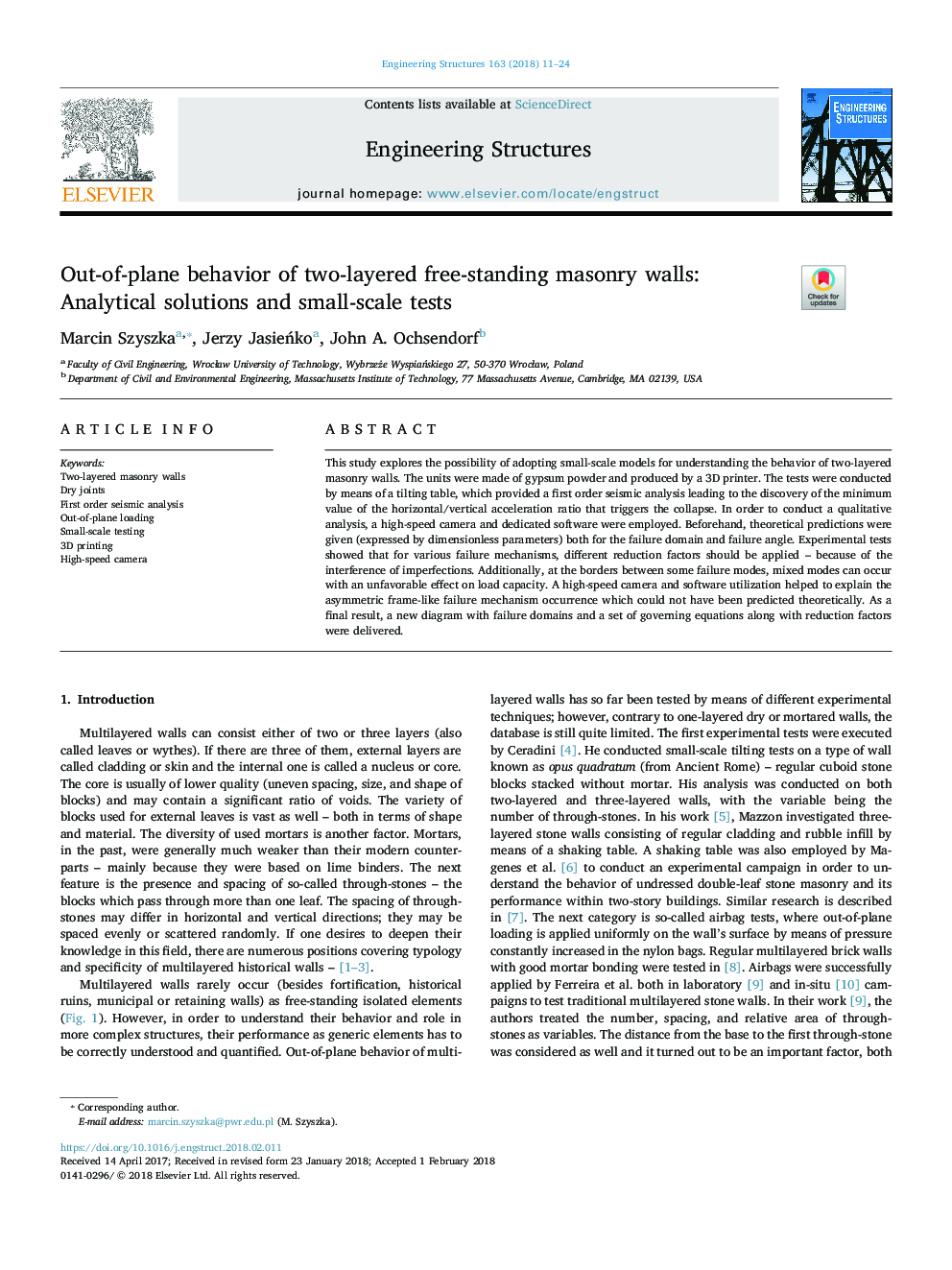| Article ID | Journal | Published Year | Pages | File Type |
|---|---|---|---|---|
| 6737706 | Engineering Structures | 2018 | 14 Pages |
Abstract
This study explores the possibility of adopting small-scale models for understanding the behavior of two-layered masonry walls. The units were made of gypsum powder and produced by a 3D printer. The tests were conducted by means of a tilting table, which provided a first order seismic analysis leading to the discovery of the minimum value of the horizontal/vertical acceleration ratio that triggers the collapse. In order to conduct a qualitative analysis, a high-speed camera and dedicated software were employed. Beforehand, theoretical predictions were given (expressed by dimensionless parameters) both for the failure domain and failure angle. Experimental tests showed that for various failure mechanisms, different reduction factors should be applied - because of the interference of imperfections. Additionally, at the borders between some failure modes, mixed modes can occur with an unfavorable effect on load capacity. A high-speed camera and software utilization helped to explain the asymmetric frame-like failure mechanism occurrence which could not have been predicted theoretically. As a final result, a new diagram with failure domains and a set of governing equations along with reduction factors were delivered.
Related Topics
Physical Sciences and Engineering
Earth and Planetary Sciences
Geotechnical Engineering and Engineering Geology
Authors
Marcin Szyszka, Jerzy JasieÅko, John A. Ochsendorf,
